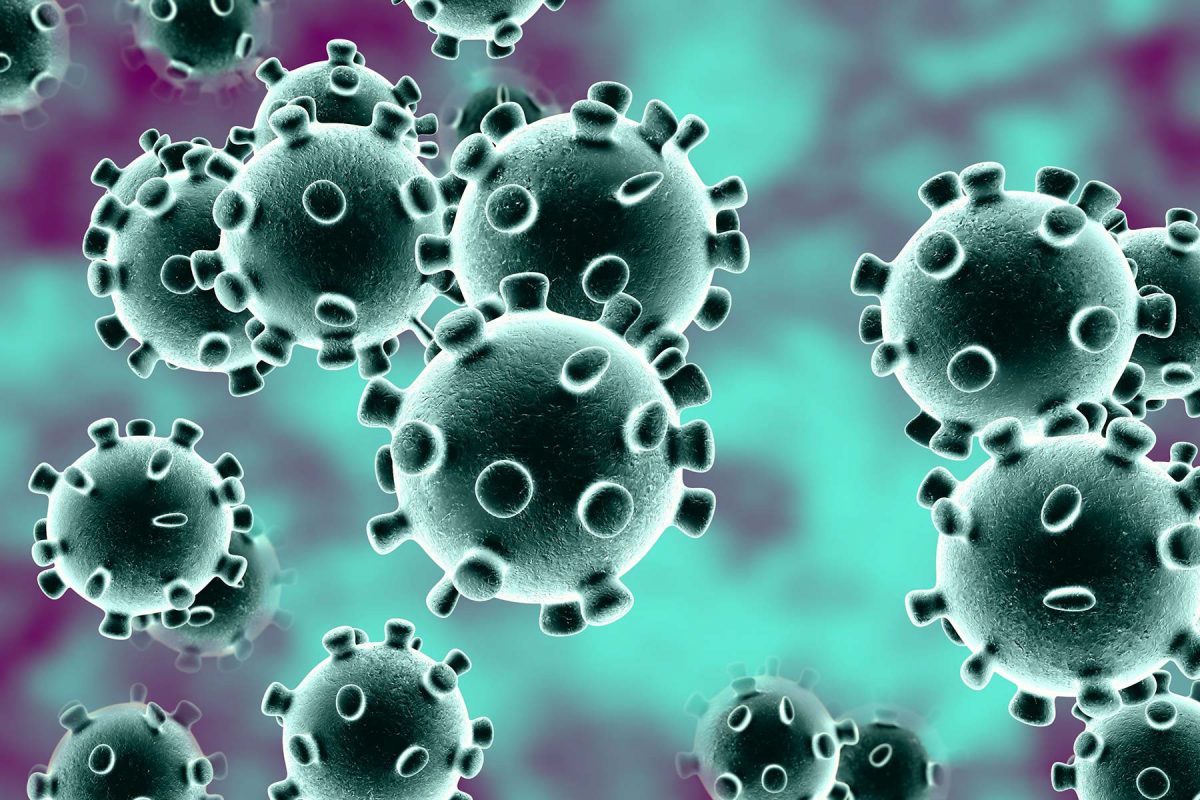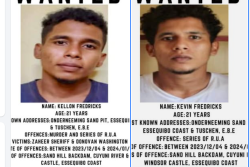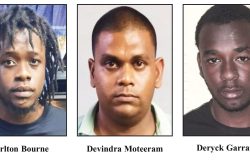President David Granger last evening announced that Guyana has confirmed its first case of the coronavirus (COVID-19), and the woman, who travelled from New York and had underlying health conditions, died at the Georgetown Public Hospital (GPH) yesterday.
COVID-19 was labeled as a pandemic by the World Health Organisation (WHO) yesterday. The arrival of the virus could pose a serious threat to the local health system. (See other story on centre pages)
“It is my sad duty to announce Guyana confirmed its first imported case of Coronavirus Disease 2019 (COVID-19) in Georgetown on Wednesday 11th March 2020,” the president said in an address to the nation.
The person has been identified as a 52-year-old woman, who travelled from the United States before the first case of COVID-19 was confirmed in the state of New York. According to the statement by the president, the woman arrived in the country on March 5th. She admitted herself to the Georgetown Public Hospital Corporation on Tuesday afternoon at around 5pm and while she was there, she presented uncontrollable diabetic and hypertension conditions which saw her having to be resuscitated.
During an emergency press conference at the National Cultural Centre yesterday, Dr Fawcett Jeffrey, Medical Director of the GPH said that in addition to being diabetic and hypertensive, the 52-year-old seemed to have flu-like symptoms. He explained that while the resuscitation succeeded, she died at about 8am yesterday. At that time, he attributed her death to diabetes and hypertension.
After her relatives revealed to health officials that the woman recently traveled from New York to Guyana, an investigation was conducted. However, family members could not confirm if she had been in contact with anyone who was infected with COVID-19. “This patient did not have fever but had shortness of breath with diabetes…,” he said.
Regardless, health personnel raised concern about her travel history and consequently, samples were collected and sent to the National Reference Laboratory.
According to Granger’s statement, the sample was sent at about 10 am to the laboratory and the diagnosis was confirmed at approximately 17:00 hours. The 52-year-old woman’s case is classified as an imported one and measures are being taken to prevent the risk of community spread.
Interventions
Following the diagnosis, a health team was dispatched to assess the home of the deceased and public health prevention measures were subsequently implemented. In addition, health officials are seeking to identify persons who the deceased may have been in contact with by contact tracing. A meeting with ministry officials and members of staff at the GPH was held and all the necessary interventions were implemented, the statement further disclosed.
Dozens of persons may have to be traced here and the US authorities would also have to be advised for them to undertake the relevant checks.
Meanwhile, screening procedures remain in place for persons arriving in Guyana from high-risk countries, which include the People’s Republic of China, Italy, South Korea, Singapore, Japan, Thailand, Malaysia and Iran. Several countries were added to the list yesterday. These countries include Jamaica, Domini-can Republic, Brazil, French Guiana, Panama, St Vincent and the Grenadines, and the United States of America.
Granger advised that all unnecessary travel and public gatherings must be discouraged.
Patrol
Meanwhile, competent agencies will continue to patrol irregular border crossings and the Ministry of Public Health’s (MPH) intentions of sensitising key personnel at all air and seaports will continue. Training of health-care providers and first-responders will also continue while the Active Surveillance system in place will be heightened.
Granger said that the ministry has identified three quarantine facilities thus far but will be identifying others. In addition, the ministry has also developed the local capacity to test for the COVID-19 and assessed the readiness of health facilities in order to meet the anticipated increase in demand on services. The ministry will also continue to fill existing gaps, including with respect of additional supplies and equipment. It was stated that the ministry has enough personal protective equipment for health facilities across the country and also adequate stores of respiratory medicine for the next three months.
“These efforts are supported by a communications campaign to keep the population updated on the virus and its impacts and oversight provided by the Health Emergency Operations Centre. The National Emergency Operations Centre (EOC) will be activated to provide sector wide support. The Ministry of Public Health is also urging the public to adhere to infection prevention and control measures,” Granger said.
Those measures include maintaining a distance of at least one metre from persons who are coughing or sneezing; perform hand hygiene frequently by washing hands thoroughly with soap and water or using a hand sanitizer if hands are not visibly soiled; cover mouths and noses with a tissue when coughing or sneezing, and then discarding it and avoid touching the face.
“I use this opportunity to appeal to the public to remain calm and to implement all the advisories relating to personal hygiene, social distancing and overall infection prevention and control. The Government of Guyana will continue to keep the public informed as we manage this public health challenge,” the president said.
Meanwhile, during the press conference yesterday morning, Lawrence said that although the accident and emergency department of the GPH was not closed, some precautionary procedures were put into place. At that point, she said that no one was quarantined as they were awaiting the results of the tests to implement safety measure.
Speaking to Stabroek News after the press conference, Persaud stated that since the United States was not on the list at that time, persons entering Guyana from the US were not screened unless they showed flu-like symptoms. “When you look at [it] there are 4-600 passengers a day coming from New York and to screen everybody will be a terrible burden so we have to be very carefully when doing these things,” he said.









